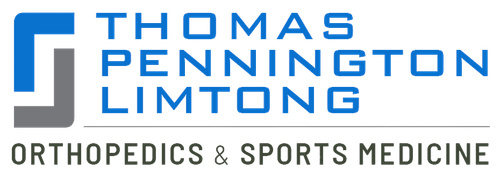 Following a shoulder injury or surgery, an exercise condition program may be necessary to support the patient’s return to normal activities and restore regular movement of the shoulder. A well-structured condition program will give the patient the strength and confidence to even resume sports and other vigorous activities.
Following a shoulder injury or surgery, an exercise condition program may be necessary to support the patient’s return to normal activities and restore regular movement of the shoulder. A well-structured condition program will give the patient the strength and confidence to even resume sports and other vigorous activities.
Rotator cuff and shoulder condition program involves a variety of exercises. To ensure safety and effectiveness, the program should be performed under the surgeon’s guidance and the supervision of a physical therapist. Exercise regimen in each case will be customized to best meet the patient’s rehabilitation needs.
The Knee and Shoulder Institute, led by board certified orthopedic surgeons, Dr. Steven Thomas and Dr. Gregory Bigler, provides state of the art orthopedic care, including recovery and rehabilitation support. The practice provides rotator cuff and shoulder condition program to patients in Las Vegas, Nevada and surrounding communities.
Program Benefits
Rotator cuff and shoulder conditioning program will provide the following benefits:
Increased Shoulder Strength
The program will help to strengthen the muscles that provide support to the shoulder. This will enable the shoulder joint to gain stability. Increased strength of the shoulder muscles will relieve pain and prevent further injury.
Greater Flexibility
The program is designed to stretch the muscles that have been strengthened. This will restore range of motion and prevent injury. Gentle stretching and strengthening exercises will keep the muscles long and flexible and help to reduce muscle soreness.
Muscle Groups Benefitting from the Program
The shoulder conditioning program will target specific muscle groups, which include:
- Deltoids (front, back and over the shoulder)
- Trapezius muscles (upper back)
- Rhomboid muscles (upper back)
- Teres muscles (supporting the shoulder joint)
- Supraspinatus (supporting the shoulder joint)
- Infraspinatus (supporting the shoulder joint)
- Subscapularis (front of shoulder)
- Biceps (front of upper arm)
- Triceps (back of upper arm)
Program Duration
The shoulder condition program should be followed for about four to six weeks, unless otherwise recommended by the surgeon or the physical therapist. Following full recovery of the shoulder movement and function, the patient can continue the exercises as a maintenance program for lifelong protection and health of the shoulders.
The patient should ideally continue to perform the exercises two to three times a week to maintain strength and range of motion in the shoulders. Board certified orthopedic surgeons Dr. Thomas and Dr. Bigler receive patients from Las Vegas, Nevada and nearby areas for shoulder treatments.
Getting Started
Warm-up
Prior to starting the exercises as per the shoulder conditioning program, the patient should warm up with five to 10 minutes of low impact activity, such as riding a stationary bicycle or walking.
Stretching Exercises
After the warm-up, the patient should perform stretching exercises as advised by the physical therapist before progressing to strengthening exercises. Once the strengthening exercises are over, the stretching exercises should be repeated to end the regimen.
Alertness to Pain
If the patient feels pain at any point during the exercise regimen, they should not ignore it. They should ask the surgeon or the physical therapist for advice before continuing with the program.
If you would like to schedule an appointment or learn more about the Knee and Shoulder Institute procedures & treatments performed by Las Vegas, Nevada board certified surgeons Steven C. Thomas, MD and Gregory T. Bigler, MD. call (702) 933-9393; Physical Therapy (702) 933-9394
